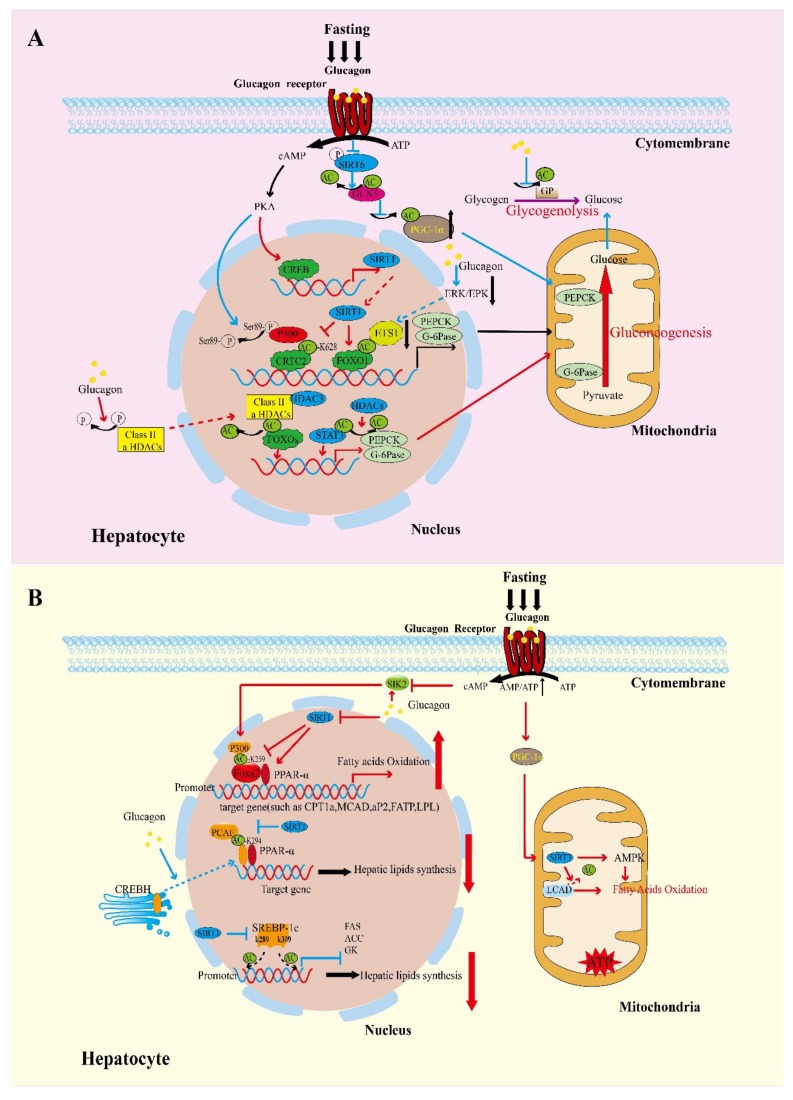Figure 1.
Glucagon-induced acetylation of energy-sensing factors in control of hepatic glycolipid metabolism. (a) Blue arrow: Glucagon initiates the transcription of downstream G6Pase and PEPCK1 by inducing acetylation of CRTC2 and FOXO1 and reducing acetylation of PGC-1α and GP, which leads to elevating gluconeogenesis. Red arrow: Glucagon-induced deacetylation of CRTC2 and FOXO have different roles in glucose metabolism. (b) Blue arrow: Glucagon-induced acetylation of CREBH and SREBP-c1 inhibit the hepatic lipids synthesis. Red arrow: Glucagon-induced acetylation of PPAR-α and Foxa2 increase fatty acid oxidation. (G6Pase: Glucose-6-phosphatase; CRTC2: CREB regulated transcription coactivator 2; FOXO1: Forkhead box O1; PEPCK1: Phosphoenolpyruvate carboxykinase; GP: Glycogen phosphorylase; PGC-1α: Peroxisome proliferator-activated receptor gamma coactivator 1α; PPAR-α: Peroxisome proliferator-activated receptor-α; SREBP-1c: Sterol regulatory-element-binding protein-1c; CREBH: cAMP-responsive element-binding protein H).

